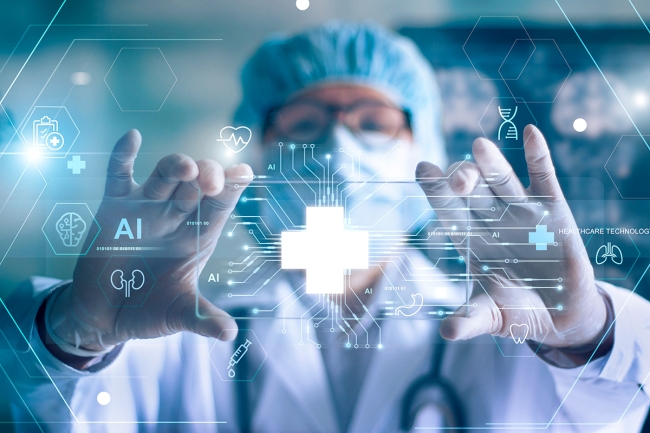You have /5 articles left.
Sign up for a free account or log in.

The University of Texas at San Antonio has launched a dual-degree program combining medical school with a master’s in artificial intelligence.
Beyond the bustle of med school classes and socializing, Aaron Fanous spent his free time reading up on artificial intelligence and computer science. Balancing it all was an undertaking, but in addition to medicine, he’s always had an interest in technology.
“I saw how influential software was in the medical world, and a lot of context was missing from it,” Fanous said. “The reality is, technology will come into medicine—it will be in most fields—and knowing what can be done with it will open so many doors to improve the entire system as a whole. That’s too big to ignore.”
Fanous is one of the first students enrolled in a new dual-degree AI-focused medical program, which launched last week. The program, jointly offered by UT Health San Antonio and University of Texas at San Antonio, is among the first in the nation to combine artificial intelligence with medicine.
The program comes as many universities are pouring money into AI, with some spending millions on initiatives to equip students with what many believe will be critical skills for the future.
Interest in AI’s impact on medicine has ramped up recently, with researchers citing potential benefits in treating, diagnosing and caring for patients.
“There has been a lot of conversation everywhere about AI and, in particular, the large language model,” said Dr. Alison Whelan, chief academic officer at the Association of American Medical Colleges.
AAMC informally surveyed its members this summer, asking their thoughts on AI’s intersection with the medical world and what AAMC could do to help its members. “With AI, it was ‘Do what you always do, but maybe accelerate it since this is happening rapidly,’” Dr. Whelan said.
Several universities across the nation have begun integrating AI into medical practice. Medical schools at the University of Florida, the University of Illinois, the University of Alabama at Birmingham and Stanford and Harvard Universities all offer variations of a certificate in AI in medicine that is largely geared toward existing professionals.
“I think schools are looking at, ‘How do we integrate and teach the uses of AI?’” Dr. Whelan said. “And in general, when there is an innovation, you want to integrate it into the curriculum at the right pace.”
In the new UT dual-degree program, medical students will spend four years on the UT Health side and one year on the UT San Antonio side, ultimately earning a doctor of medicine degree and a master’s of science degree in artificial intelligence. Students can choose a concentration in computer science, data analytics or autonomous systems.
“It’s more than just adapting to change; our program empowers physicians to lead the conversation on how AI can be used in health care,” said Dhireesha Kudithipudi, director of UTSA’s Matrix AI Consortium. “If physicians are not in the center of this conversation, then the solution may not really be harnessing the full potential of AI or won’t be holistic. So bringing them to the center and giving them the power to lead is what this program is trying to do.”
The program, roughly four years in the making, started taking shape long before last year’s boom of generative AI like ChatGPT made the technology a household name. Kudithipudi is overseeing the program from the UT San Antonio side, while Dr. Ronald Rodriguez, professor of urology at UT Health San Antonio, is overseeing the program from the UT Health side.
“We didn’t recognize how quickly the world would become interested in AI, but it came together nicely,” Dr. Rodriguez said. He said AI has been on his radar since 1980, when he took a computer course during his freshman year at the Massachusetts Institute of Technology. “I got really fascinated by it and thought it would be a great tool to have for scientific research and a variety of applications.”
Dr. Rodriguez hopes to grow the UT program to roughly 15 students in the next few years.
“We said, ‘Let’s look at this as if we were starting from zero—how would we approach it?’ and realized we needed to start earlier, with medical students, not postgraduates,” he said. He added that he hopes the program will be a model, helping other universities overcome the challenges of combining two degrees from separate colleges.
Kudithipudi said the program can also help the overall research community, building bridges between the technical and medical sides that have long been siloed. She said the program could expand internally as well, pointing to interest from UT Health's dental school.
“I think this is only the beginning; there’s a lot to explore here, and I truly believe the solutions we’re trying to build as engineers or computer scientists may not be holistic in a lot of cases,” Kudithipudi said. “We don’t want physicians to come in at the end point; we want them to lead or be engaged in the process very early.”





